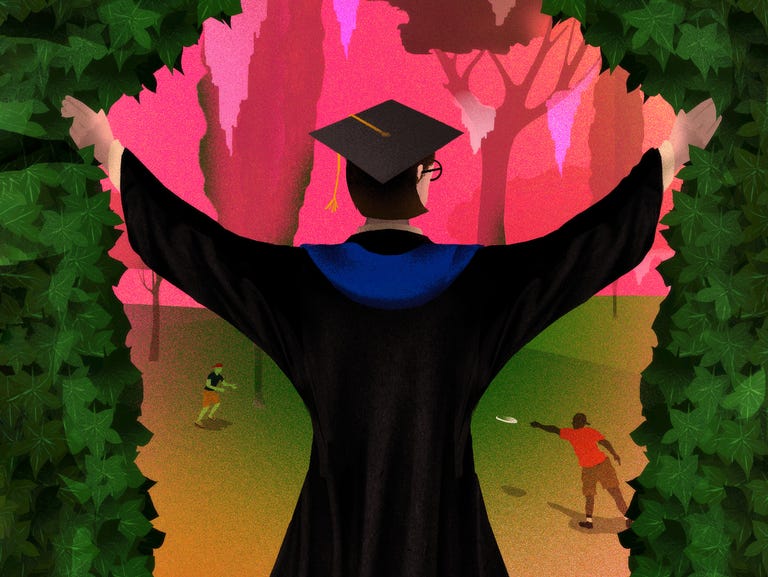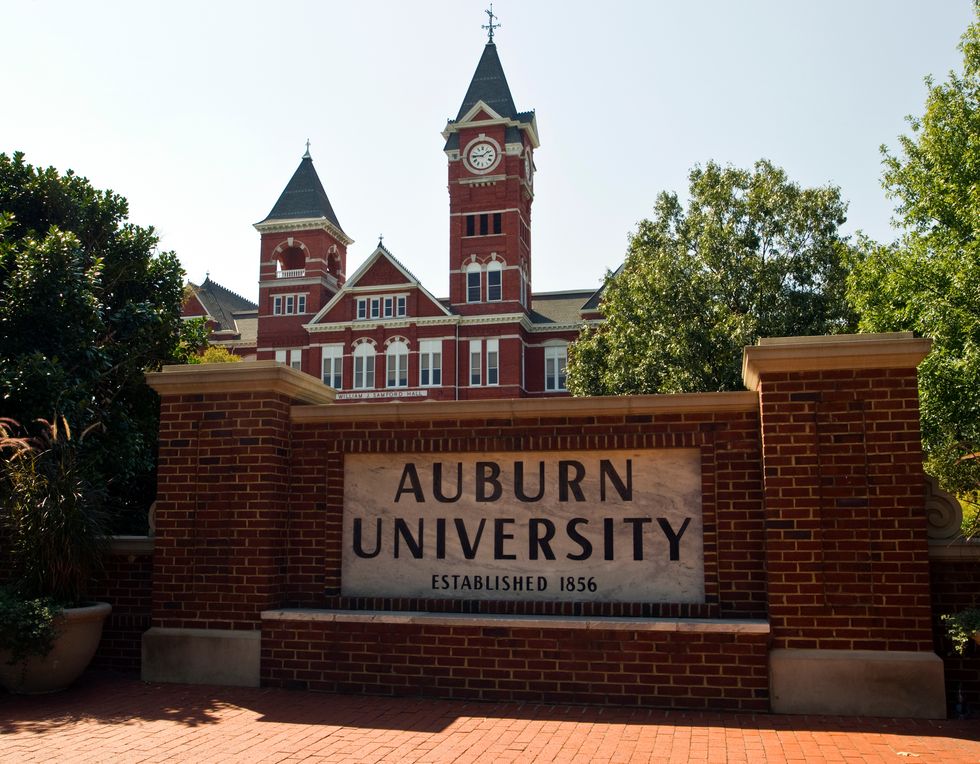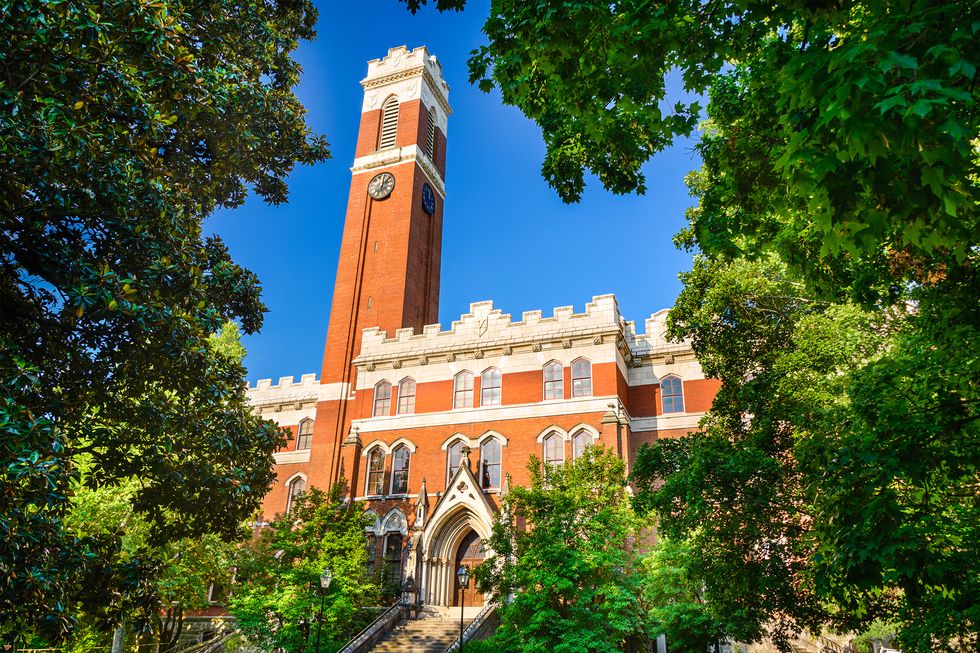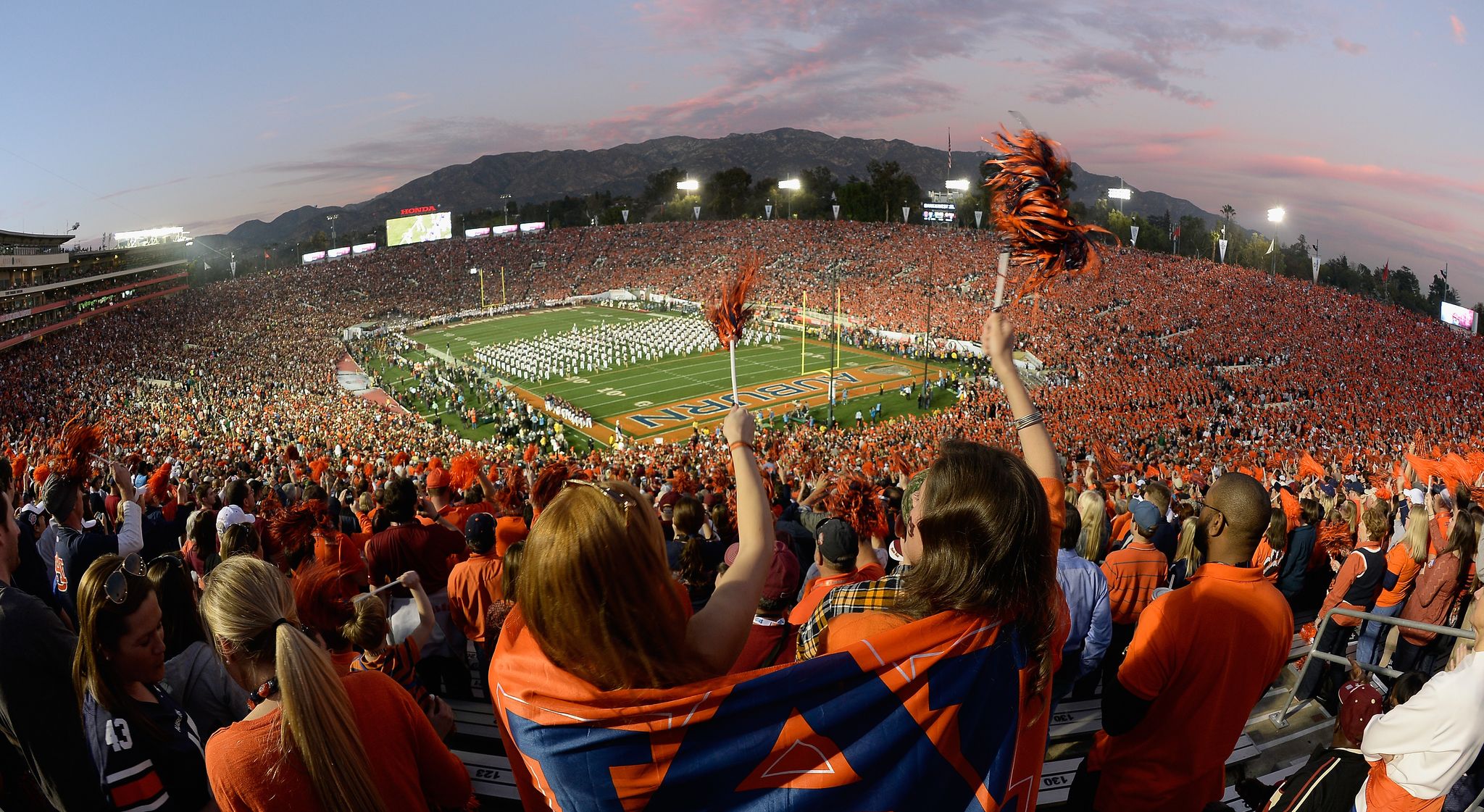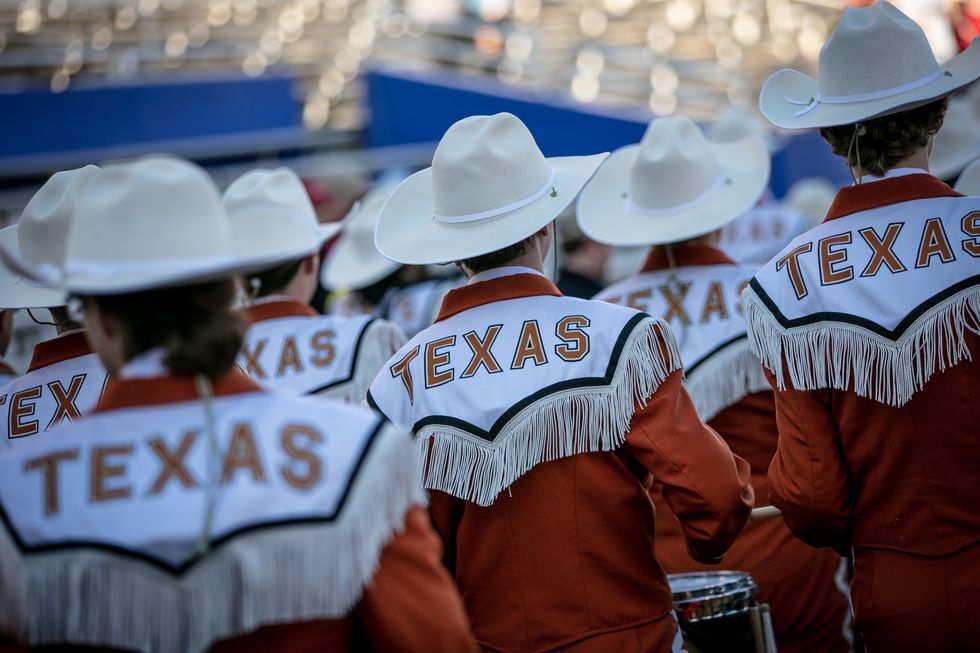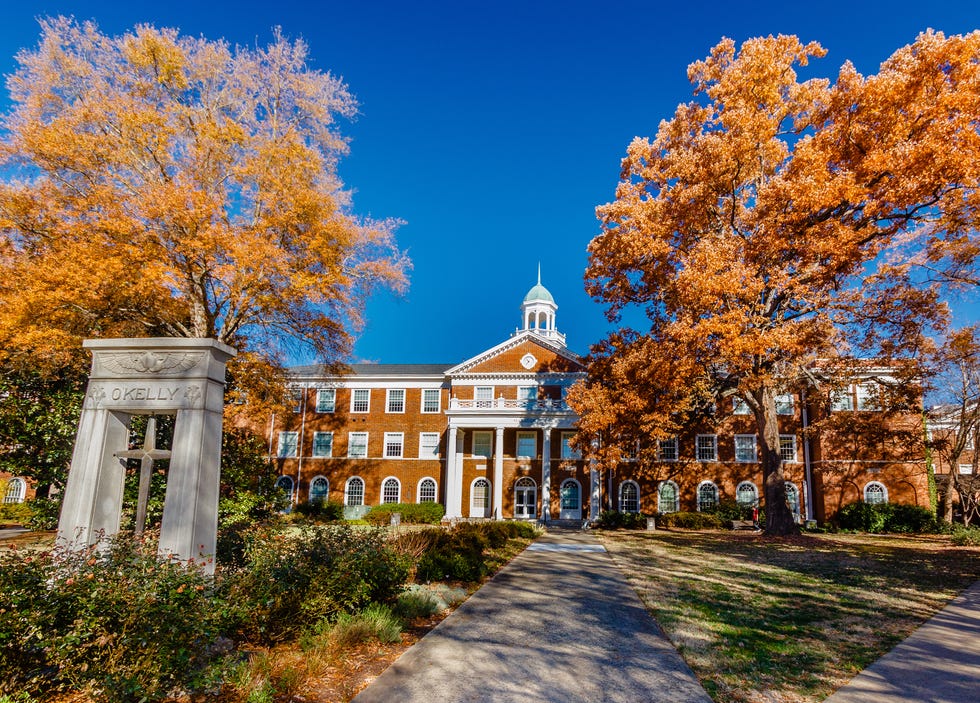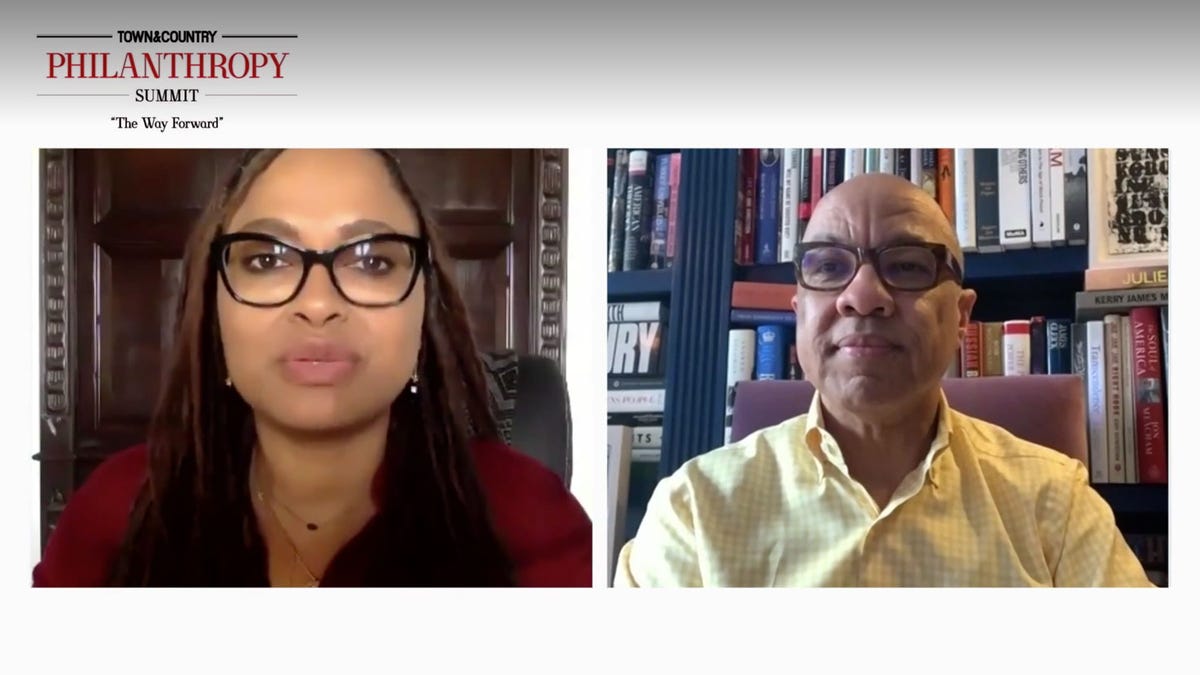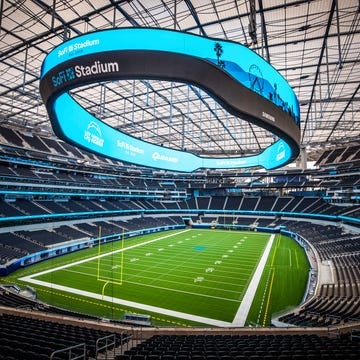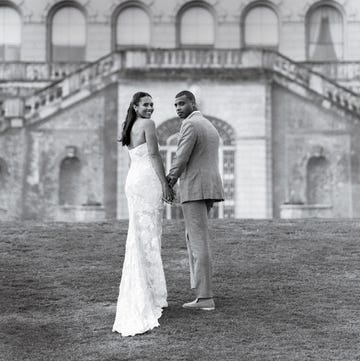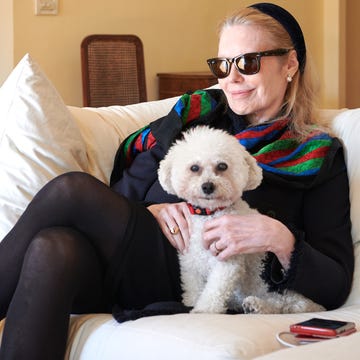In the fall of 2019, Brennan Vincent was a junior at Mamaroneck High School. Located in the groaningly wealthy suburbs of New York City, Mamaroneck is a top-ranked public school where, during college admissions season, “everyone’s competitive, trying to get into the same five schools,” Vincent said recently.
Indeed, during Vincent’s junior year it was a given that her peers hired independent college counselors and worked with essay coaches to pave the way to acceptance letters from Cornell, Brown, and other top-rated schools, most of which are located in the Northeast. “It was a ‘Who do you know?’ or ‘Who do you know who knows someone?’ type of thing.”
The process, Vincent says, was affecting her friends’ mental health, and she was vehemently turned off. So when her father, who went to college in the South, suggested she consider Auburn, a public university in eastern Alabama, she did. Within seconds of setting foot on Auburn’s lush, rolling campus—where stately brick buildings coexist with such world class amenities as a $72 million athletic facility with a huge, paw-shaped hot tub (Auburn’s mascot is a tiger)—she was smitten. “Out of all the campuses I toured it was easily the most beautiful. The number of people playing spike ball, throwing a frisbee, having picnics…” She also noted that back home it was much chillier. “Everyone just looked so happy” at Auburn. “I was like, This is where I need to go.”
Vincent, who enrolled the following year in Auburn’s Honors College, where she’s studying engineering, may sound like a quirky outlier: a New Yorker who decides to go rogue and attend a college in a deep red state that has a respectable 99 ranking among national universities on the sacrosanct U.S. News and World Report college list. But she is part of a growing trend among high school students in liberal hubs like New York, Boston, Los Angeles, and Chicago who are deciding to forgo the competitive, cutthroat environments of Colgate and Columbia for the more rah-rah vibe of places like Auburn, Southern Methodist University, Texas Christian University, Clemson, the University of Miami, and other Southern institutions that have traditionally been written off by coastal snobs as football-and-frat-party schools that let anyone with a measurable GPA in their doors.
57%
Fall 2021 freshmen at TCU who came from out of state— up from 30 percent in 2008.
Some Southern universities—Tulane, Emory, and Vanderbilt, for example—have long attracted a steady stream of non-Southerners thanks to reputations as rigorous schools in cool places. Emory is considered a kind of Williams College located in a hip part of Atlanta as opposed to the Berkshires. Vanderbilt, in the heart of Nashville, is a work-hard-play-hard sibling to Dartmouth. (Some refer to “Vandy” as “the Harvard of the South” due to its brick-and-ivy campus.) And the University of Texas at Austin, a public Ivy located in the proudly left-of-center Texas capital, “is the UCLA of the South,” says Jennifer Kaifesh, an independent college counselor in Los Angeles. North Carolina has its own widely appealing, and highly selective, gems in the form of Duke University and the University of North Carolina at Chapel Hill. These schools are not thought of as Southern Southern; the biggest subset of Tulane’s class of 2026—30 percent—is from the Northeast.
What’s different now is that lower-tier Southern schools have started to enter this desirable group. Fifty-seven percent of the incoming freshman class at Texas Christian University, a midsize school in Fort Worth—where students walk around in cowboy boots on the mornings of school football games and down BBQ and queso at the Stockyards, a preserved Western district in town—are from out of state. Seventeen percent of those hail from California. Compare that to 2008, when more than 70 percent of TCU’s incoming freshmen were from Texas. Thirty miles down the road, at Southern Methodist University, a $79,000-a-year, Tara-like oasis in the middle of Dallas famous for boulevarding (high-class tailgating) and alums like Bumble co-founder and CEO Whitney Wolfe Herd, 62 percent of this year’s incoming freshmen are from out of state.
The honors programs at Southern schools are also drawing out-of-staters. Sarah Langford, an independent college counselor in Chicago, says a student she worked with recently turned down an Ivy to attend the Honors College at the University of South Carolina, where the admitted students have an average weighted GPA of 4.7. “She wanted the full college experience but still wanted to get the excellent academics.”
There are clear and practical reasons for this shift. It’s no secret how prohibitive entry into selective schools has become, particularly as so many went test-optional during the Covid pandemic, sending application numbers soaring. Harvard’s acceptance rate sank to an all-time low of 5 percent in 2021. Even the University of Southern California, once dubbed the University of Spoiled Children, is now a Top 30 school that says yes to just 16 percent of those who apply. The result is that schools like SMU, which accepts approximately half of its applicants, are no longer considered safety schools for competitive students but have become “possible” and even “reach” choices. Ditto for TCU, which had a 53 percent acceptance rate in 2021. Jill Stuart, a USC alum living in Los Angeles, says that when her twin sons were applying to college they didn’t even consider her alma mater, because “it’s gotten so difficult to get into, and my kids were not at that academic caliber. It would have been some sort of deferred or transfer-in situation, and they very much wanted to set foot in a dorm the fall of their freshman year.” Her sons both enrolled at TCU.
These schools hit the sweet spot of being easier to get into than the Ivies but not easy, according to Langford. “I think anything with that 45 percent acceptance rate or higher—but not 80 percent—makes students feel like, Okay, I’m going to a really good school that I can maybe get into,” she says.
There are also more nuanced reasons behind the new Southern migration. Students in places with the strictest Covid protocols, such as the Northeast and California, spent almost a full year of high school on Zoom, missing out on proms and IRL graduations. Colleges and universities in those areas also went online for extended lengths of time. But in the South, where policies were far less stringent and face masks became a lightning rod issue (and a symbol of the raging culture divide in this country), many college campuses were only briefly closed. By the time Vincent arrived at Auburn in the fall of 2021, she says she was going to football games “with 90,000 people.” Life “felt like it was 2019 all over again.”
The culture wars were manifest in more fraught ways as well. As protests about the murder of George Floyd rocked the nation in the spring and summer of 2020, and broad discussions about racial equity became part of the national discourse, many secondary schools, particularly elite independent institutions, rethought their curricula. Books that were deemed culturally insensitive were taken off reading lists, and a new focus was put on examining and discussing racism. Some conservative families felt that it all went too far. The battle bled into headlines: There was the Brearley dad who yanked his daughter out of the school and wrote a letter to other parents urging them to similarly withdraw their children from a place that was “brainwashing” kids with a “woke ideology.”
This dynamic has begun to infiltrate the college admissions cycle, as conservative families consider what type of environments they want for their kids after high school. Liberal elite colleges, as they see it, promise only more wokeism. Why not send their children to a place that’s more about Greek life than social justice seminars?
Christopher Rim, founder and CEO of Command Education, an independent college consulting company with offices in New York and Miami, says that a family with children at the prestigious Dalton School in Manhattan recently shifted their focus away from schools like Stanford, Duke, and Georgetown to Washington University in St. Louis, Emory, and SMU. “They say they want a school where ‘You see a sense of community and where you’re really able to have debates and have conversations with opposing viewpoints and not be canceled,’ ” says Rim, whose rate is $1,500 an hour. “I’ve never sent kids to visit SMU before, unless they lived in Texas,” he adds. “Now we have kids from Dalton applying.”
$450M
Amount SMU is raising to increase need- and merit based scholarships.
Rim’s experience illustrates how much the culture wars are affecting discussions about higher education. These conversations have become all the more heated as eruptions over race, gender identity, and freedom of speech have been rocking college campuses. In 2017 protests at UC Berkeley over an appearance by right-wing commentator and Breitbart News editor Milo Yiannopoulos turned into riots involving Molotov cocktails and pepper spray. Earlier this year at Yale Law School, a panel attended by conservative constitutional rights litigator Kristin Waggoner was disrupted by jeers and what Waggoner described as “physical intimidation.”
The effect, though, can be complicated. For some families a total escape from so-called liberal thought pockets is the goal. But there are also students who, while seeking a less politically charged (or just more easygoing) environment in college, find themselves butting up against other extremes at Southern universities, many of which lean conservative. Accustomed to liberal metropolises like Manhattan and L.A., they find themselves in another arena of thought and politics—especially since Roe v. Wade was overturned in June. Stricter abortion laws are already in effect in states like Texas, Florida, and Alabama.
Arthur Troy, who attended Harvard-Westlake, an esteemed independent school in Los Angeles, and then went to SMU, says, “My sense of my liberal, progressive politics just felt so average at Harvard-Westlake and in L.A. I was like, Oh, everyone has human rights. Women should have healthcare—of course! It didn’t make sense to me that there was anything crazy going on until I got to campus and there’d be Donald Trump Jr. speaking, or [conservative comedian] Steven Crowder.”
Still, he admits, “It kind of activated a political side of me, which I actually liked. Even though I disagreed with many things, I’m grateful for that exposure to something different.”
In the polarized America of right now, the term community is a powerful elixir when it comes to attracting students to college campuses, and it’s tapping into a marketing playbook that Southern colleges have long worked from, particularly schools known for football-centric, school-spirit identities.
“Students live in community here and learn in community, so that’s an important part of our secret sauce,” says Kathy Cavins-Tull, vice chancellor for student affairs at TCU. She cites the school’s relatively small classes (25 to 30 students), which are taught by faculty as opposed to graduate students or teaching fellows.
“It’s just very mellow, and everyone’s friendly,” says Austyn Davis, who was one of six girls who graduated from Marymount High School, an all-girls Catholic school in Los Angeles, and went to TCU in 2021. Another six went to SMU. “It’s very different and very similar in a lot of ways to L.A. There are football games and a country feeling. At the same time, I didn’t feel out of place or that I had to change anything about who I am.”
TCU’s emphasis on active engagement and socialization remained alive and well during the early days of Covid, further boosting its appeal to students who spent much of high school on Zoom. Classes went online in the spring of 2020, but in the fall students were welcomed back into the classroom (they had the option to stay online). TCU even rented furniture and set up outdoor lounges with Tivoli lights, firepits, and big-screen TVs where kids could hang out.
Jeff Stuart, who graduated from TCU last spring, says that in the fall of 2020 “just about every weekend friends from USC, Boulder, Cal Berkeley—anywhere in the country—would be flying out to come see us because they knew we were open.”
In some sense, the normality that so many young people crave is embodied in the basic traditions of wildly Instagrammable Southern schools: the football games, the tailgating, the freedom to devote as much time and energy to rushing a fraternity or sorority as acing microbiology. Even orientation seems more fun. While incoming Georgetown freshmen could participate in a program in August the goal of which was “to highlight the vibrancy of the DC community through volunteer activism and meaningful engagement with partners as a way to explore social justice issues, frameworks of solidarity, and pathways for social change,” TCU’s orientation consisted of “small group discussions, team building exercise, ice breakers, board games, cheers, lawn games…and, of course, dancing.”
But underneath the postcard quality of Southern schools, there is often a complex social fabric, particularly at schools in cities that have evolved over the past few decades thanks to growing industries that have attracted a more geographically and ethnically diverse population. Atlanta, home to major corporations like Coca-Cola and Delta, now has a booming tech and urban music scene. It’s also where the Marvel movies have been shot since 2014, and it’s home to the Centers for Disease Control and Prevention.
Such shifts have bled onto college campuses, which by their nature exist as more culturally liberal bubbles within larger environments. “Every place I’ve taught has been surprisingly [ideologically] diverse,” says Michael Phillips, Clements Senior Fellow for the Study of Southwestern America at SMU.
Phillips started his career as an adjunct professor at UT Austin, then worked at Collin College in Plano, Texas, before joining SMU. “When I was asking professors to sign an open letter about taking down Confederate monuments in Dallas, saying that they were icons that promoted white supremacy, I had some professors I contacted at Dallas-area colleges who were really offended by the idea… But then I got a very large number who did sign it. So it’s a spectrum.”
This spectrum is propelling interest in schools that families might otherwise dismiss for the politics of their home states. As Langford says, “A school like the University of Miami, even though it’s in a conservative state, is pulling kids from all over the country. So a lot of families can rationalize that and say, ‘I’m sending you to a conservative state, but you’re going to be surrounded by people from all over the country and world.’ ”
Nonetheless, some students who head south for college experience a level of culture shock, but they learn to cope by keeping quiet or focusing on nondivisive aspects of college. When Seamus Tingle was a junior at Boston College High School, a Catholic prep school, he visited a friend at the University of Alabama for a football weekend. “The entire quad turns into a big tailgate,” he says. “They’re setting up tents and grilling, watching other games in the tents. For someone who has never seen any of that, this looks like so much fun.”
He applied and got in, but things were different as a student. He found himself rooming with “three kids from Alabama. They all went to high school together and were all in the same church group. They were super-nice guys, but it was just completely different.”
He also found that his political and social views, which had always been “more moderate than the average person in Cambridge,” were considered far left down south. “If we were ever talking about politics, I was the Democratic representative in those discussions.”
Arthur Troy had a more caustic reaction when he arrived from L.A. at SMU. He recalls the group chat for his fraternity, Sigma Phi Epsilon, as being “laced with extreme” comments. “It was meant to be comedy, but the extreme nature of it sometimes went too far. It was people posting conspiracy theories for fun and talking about Pizzagate and shit.”
Of course, culture shock works the other way around, too, and the image of Southerners who venture to the cold, bitter North for college only to be met by cultural snobbism and insulting assumptions about their identities is itself a stereotype. Mary Bray Erickson, who grew up in Winston-Salem, North Carolina, and was the only person in her friend group to leave the South for college (she went to Cornell), recalls casually saying “Hey” to a guy in her freshman dorm while passing him in the hallway. “He stops in his tracks and goes, ‘Do I know you?’ ” Erickson says. “It felt like whiplash to me. In North Carolina you greet everyone as if you know them. You never say, ‘It’s nice to meet you.’ You say, ‘It’s nice to see you,’ because you may not be sure if you’ve met the person before.”
For some students who head south, the lack of diversity not just of opinion but of skin color is what sticks out most about their experience, particularly at private institutions that tend to attract a whiter, wealthier population. One recent graduate of SMU who is Asian-American (she did not wish to be identified) says she noticed this during her first week. “There was a retreat for incoming freshmen,” she says. “We all had flashlights and were in a dark room, and you had to shine the light if you identified with the Hispanic community or African-American, etcetera. There were a disturbingly low number of lights shining. I’m talking, like, six in a room full of 1,000 people.” When people who identified as Asian were asked to turn on their flashlights, “It was basically me and my roommate.”
62%
Percentage of out-of-state SMU undergrads, with California first and New York fourth.
SMU’s Wes Waggoner, who runs the school’s enrollment, says that at SMU, which is 61 percent white, there is a top-down commitment “to make sure that this is an inclusive campus and that all students feel like they can succeed.” He points out that in 2020 the university appointed its first chief diversity officer and is raising $450 million to offer more need- and merit-based scholarships to attract students who wouldn’t ordinarily be able to attend.
Not that discussions about gender or identity politics or diversity are absent at these schools, particularly those with greater concentrations of students from around the country, such as Elon University in North Carolina. Elon’s top states for incoming freshmen are North Carolina, Massachusetts, New Jersey, and New York.
Téa Valette, a Boston native who went to boarding school in New Hampshire, says that at Elon people do bring up race. “I was not as exposed [to conversations about race] as I would have been in Boston, but I went to the Raleigh women’s march for BLM,” she says. “There were a lot of posters around Halloween that said, ‘Our Culture’s Not Your Costume.’ It’s what you expose yourself to.”
For some conservative-leaning families, many Southern schools’ literal and figurative distance from what they describe as the “woke” wave in parts of the country has become a huge selling point. (Last year former New York Times op-ed columnist Bari Weiss seized this space when she announced she was founding a new, anti–cancel culture college, the University of Austin.) These families are looking to avoid environments where conservative speakers are shouted down and where an anti-fragility ideology prevails (to use the words of The Coddling of the American Mind authors Greg Lukianoff and Jonathan Haidt).
Some find the claim that families are avoiding hotbed campuses in favor of places where there’s a more equitable back and forth disingenuous. “When I hear people say, ‘I don’t want my child in an environment where they’ll be targeted for their beliefs’—no one wants anyone to be targeted for their beliefs,” says Marcia Chatelain, a professor of history and African-American Studies at Georgetown University. “But what it often is masking is a great deal of anxiety that when traditional college students between 18 and 22, especially those from middle- and upper-class families, go to college, they will start to question the ideologies they grew up with—whether it’s about race, whether it’s about wealth, whether it’s about gender or sexuality. And so what has grown out of it is a cottage industry grievance culture of books and articles, and this ridiculous University of Austin experiment, in which people are legitimating a set of fears that, in reality, are never actually fully articulated.
“This idea that the very experience that is supposed to open up your perspective and your views on the world can now be tailored even more to contribute to your already held beliefs is really upsetting. And the fact that this can actually work shows you just how little progress has been made on and off a college campus.”
Politics may once again radically affect the reputations of schools in states like Texas, Florida, and Alabama, due to the overturning of Roe v. Wade by the Supreme Court. Christopher Rim, the college counselor working with the family at Dalton, says that after the ruling was announced he received a text message from the daughter who was planning to apply to SMU. She told him she no longer wanted to apply to any college in a state that had abortion restrictions.
Elena Hicks, SMU’s dean of admissions, says this kind of reaction is something she’s trying to correct. “When laws and/or policies change” in a state, the hope is that “you don’t feel like, I can never go to that state, or I can never go to that city. There are people of all views and walks of life that make up who we are in Dallas, and at SMU and in the state of Texas.”
When asked whether the Roe v. Wade ruling would affect her feelings about Auburn, Vincent says, “There were already pretty strict laws [in Alabama] before. It doesn’t change my opinion of the school at all.”
In the meantime, there are other things to focus on. Vincent’s friend from Colgate was coming down in late September for homecoming weekend, when “on Friday night there’s a parade throughout the whole town with the candidates for homecoming queen. I never had a homecoming queen in high school; it’s strange to be seeing that in college. There are these huge floats that the sororities make,” she says. “It’s so weird, but at the same time it’s so much fun. It’s like being a tourist in your own town.”
This story appears in the October 2022 issue of Town & Country. SUBSCRIBE NOW
